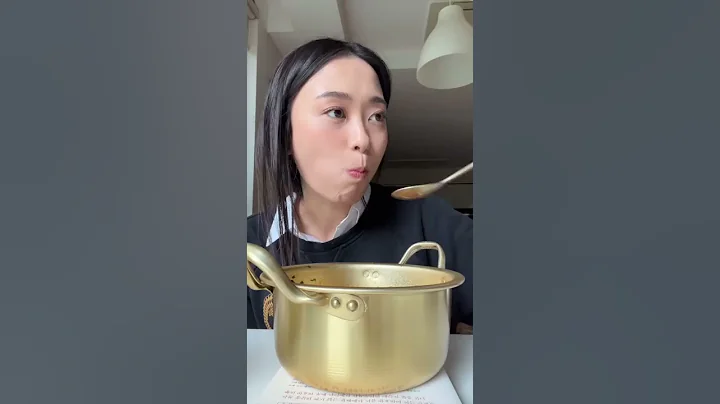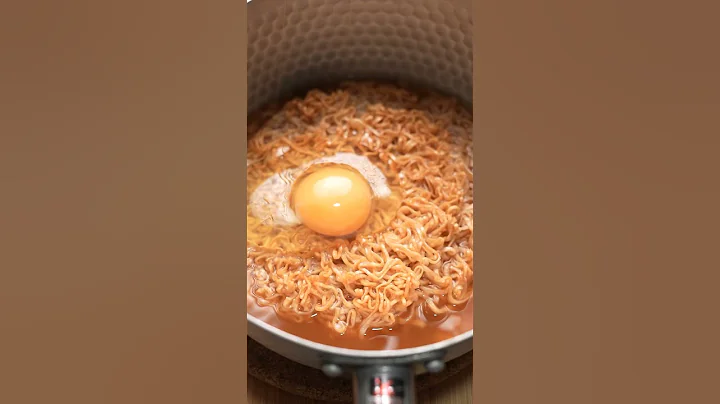
(1) The selection of materials
is extremely important for the production of ramen. According to Gansu's resource conditions, after years of exploration and summary, there is a saying in the selection of materials: Gannan’s yak Yongdeng noodles, Gaolan’s pong The line of industrial zone Gangu (chili). Since Penghui has now been transformed and uses instant Penghui ramen, the other three items will be briefly summarized.
Yak in Gannan: Gannan Tibetan Autonomous Prefecture has a high altitude and has no pollution on the natural pastures. Gannan yak has stubby limbs, cold-tolerant, and the yak meat is bright red, tender, high-protein, low-fat, nutritious, delicious and pure, with appropriate amount of grass. After the fruit, cinnamon bark, clove, sannai, fennel, ginger peel, pepper, etc. are boiled, the soup is pure and fragrant and long, and the taste is very good. Lanzhou beef noodles boiled meat to make soup technology is very important.
Yongdeng noodles: The flour milled from the fine wheat "monk head" in Yongdeng County, Lanzhou City has a high gluten value, white and slightly yellowish, and imported noodles are somersaults, slightly crispy, fragrant and good in taste. When the noodles are soaked in the soup, the noodles are tight but the soup is not muddy. Due to the low output of "Monk Tou" and the large market demand, it cannot meet the market demand. Nowadays, high-gluten flours such as Saibeixue and beef noodle special flour are used.
Gangu thread: refers to a thin and long thread pepper that is abundant in Gangu County, Gansu Province. After the pepper is dried, it is pressed and ground into a chili pink, bright red, containing fat, spicy and fragrant, and made into a spicy oil The spiciness is pure and thick, and the color is bright red.

(two) the production of ramen
1. The process flow of making ramen:
kneading noodles → 饧 noodles → adding ramen noodles to fold the noodles → slipping strips → adding agents → ramen noodles → boiling noodles
2. Operating points
(1) For noodles (high-gluten noodles are used)
ramen oil is first grade refined rapeseed oil.
Proportion: 500 grams of flour, 4 carats of flour, 2% of water, 250-300 grams, and the water temperature of the dough should be determined according to the season. In summer, the water temperature should be low, about 10 degrees, in spring and autumn, about 18 degrees, and in winter, about 25 degrees. . Only at a specific water temperature, the protein contained in the flour will not be deformed, and more gluten network will be generated; the starch will not be gelatinized and will be enriched in the gluten network. In summer, because the temperature is higher, the dough strength will decrease even if cold water is used. In this case, add some salt appropriately, because salt can enhance the strength and elasticity of gluten and make the dough dense. It is recommended to use the instant Penghui Ramen agent produced by the Lisi Chemical Factory of Lanzhou University. Compared with the traditional Penghui, this product has continuous ramen noodles, and the noodles are more "glutinous". It does not contain cyanide, arsenic, lead and other substances. , Has the advantage of speed capacity. When using it, melt it with warm water and let it cool in the air (add 2500 grams of water per 500 carats of flour, 75-90 kg of flour can be pulled). First put the ramen agent in the container and melt it with a small amount of water. Pour the flour on the chopping board while evenly spreading the salt on the flour. You can also use a basin, pick it up in the middle, and pour in water. 500g of noodles are about 250 to 300 grams of water. (Different flour gluten, different water content, different water consumption).
first water consumption is about 70% of the total. During operation, it should be mixed evenly from the inside to the outside, from the bottom to the top, and mixed into a shuttle shape (snow flake shape). After mixing into a shuttle shape, you need to spray water to continue the harmony (you can also add a little bit of water to make the shuttle shape, and then pour the shuttle fabric together). The second spray accounts for about 20% of the total dosage, and another 10 % Water should be flexibly controlled according to the specific conditions of the dough. When kneading the noodles, use techniques such as pounding, pressing, lifting, and kneading. Pounding is to press the dough with the palm or fist; to press the dough with palms or fists at two times; to press the dough into a tiger's claw shape with the hand and grasp the dough. Push forward; rubbing is rubbing or rubbing back and forth with your hands to mix the dough into a ball. Kneading the noodles mainly involves pounding the noodles. Double punches (dip the noodle water at the same time, but pay attention to completely pour the water into the noodles) to hit the dough. The most important thing is that when the dough is flattened and then the noodles are stacked, they must face Move in one direction (clockwise or counterclockwise), otherwise the gluten is easily disordered. This process takes about 15 minutes or more. Knead until it doesn't touch your hands or cutting board, and the dough surface is smooth. There is a very simple phenomenon, it's almost enough to pound the noodles to small bubbles. The purpose of mixing into a shuttle is to prevent the appearance of water-coated surface (that is, the accumulation of water in the large dough layer), because the water phase and powder phase of the water-coated surface are separated or the affinity is not tight, resulting in doughLose luster and toughness. Pounding, picking, and boarding are to prevent the slag-wrapped surface (that is, there are dry powder particles in the dough), promote more gluten to absorb water, fully form the gluten network, and produce better extensibility.
(2) Mian noodles (wake up noodles)
Brush the surface of the soft dough with oil and cover it with a damp cloth or plastic cloth to avoid drying or crusting on the surface of the dough after the wind blows. Leave it for a while, at least 30 minutes. The purpose of the noodles is to allow the powder particles in the center of the dough that have not absorbed enough water to have a sufficient time to absorb water, so that there will be no small hard particles or small fragments in the dough, making the dough even, softer, and better forming gluten The network improves the elasticity and smoothness of the noodles, and the finished product is more refreshing.
(3) Add ramen agent to make noodles
knead the dough with ramen agent water into a long strip, hold both ends with both hands, shake it up and down, repeatedly stretch, and determine whether you need to stretch the dough according to the strength of the stretched dough. After repeated stretching and kneading, until the gluten structure of the same group is arranged smoothly and evenly, and meets the dough requirements for ramen noodles, the next process can be carried out. (4) Next, place the slipped dough on the chopping board, grease it, stretch it gently, press it on the surface with the palm of your hand, and knead it back and forth into a round strip of uniform thickness, and then pull it into a uniform thickness. , Noodles of equal length, cover with tarp and leave for about 5 minutes to ramen.
(5) Sprinkle flour on the chopping board of ramen
, roll the noodles into strips, and roll them on the noodles, such as pulling leek leaves and wide noodles, press it with your hands, hold both ends of the noodles with both hands, and then stretch After pulling and pulling apart, turn the left hand with the right hand, separate the two sides of the left hand, hook the middle of the noodles with the index finger of the right hand and then stretch. Separate the noodles after they are stretched. Then pour the noodle head of the right index finger into the left middle finger and hook it, hook the index finger of the right hand into the middle of the noodles, and stretch outwards. According to the thickness of the noodles on the left hand, use the left hand to properly close the noodles. Repeat the operation. The same noodle can be changed from root to 4. When 4 sticks become 8 sticks, the number of noodles doubles. The thickness of the noodles is determined by the number of deductions. The more deductions, the finer the noodles. Generally, the capillary is 8 deductions, the fine noodles 7 deductions, and the fine noodles 6 deductions. After pulling it, pour the noodles on the index finger of the left hand into the thumb of the right hand, use the middle and middle fingers and index fingers to cut off the noodles on the worker's hand, and put the noodles into the pot to cook the noodles. At present, depending on the shape of the noodles and the number of deductions, the main varieties of ramen noodles include capillary, fine noodles, two fine noodles, three fine noodles, leek leaves, wide noodles, large width, and buckwheat ribs.
(6) Cooking noodles Put the pulled noodles into the pot, the water in the pot should be boiled and wide, wait for the noodles to rise, stir gently, cook the noodles, and put them in a bowl. The pot for cooking noodles should be made of steel pots, stainless steel pots and other pots that are not easy to rust.
(three) the production of beef soup
1. The technological process of making beef broth
material selection → soaking → cooking → skimming foam → cooking with seasoning → removing beef and processing
→ hanging soup → seasoning with seasoning water → finished product
2. Beef soup preparation method
(1) Soup raw materials
The soup is made of beef leg bones, refined beef, and beef liver. The seasonings include ginger, grass fruit, cinnamon, clove, pepper, sana, salt, and grass fruit in the seasoning. Break it open and wrap it with gauze with cinnamon, cloves, pepper and Sannai to form a seasoning packet. Generally, the total material does not exceed 80 grams!
(2) Soaking method: smash the beef leg bones, cut the beef into 250-500g pieces, soak them in clean water together with the leg bones. Do not discard the soaked water and save it for hanging soup.
Cooking: Put the soaked beef, sirloin bones, and fat chicken in a pot (you can't use an iron pan, because the iron pan will easily change the color of the soup), pour cold water, boil it on high heat, and remove the foam on the soup. Put loose ginger, seasoning bag, and refined salt into a pot and cook; cook on a slow fire, always keeping the soup slightly boiling. After cooking for 2-4 hours, remove the beef, thigh bones, chicken, ginger and seasoning packets. Cut the beef into small pieces and cook in another pot and then clarify it for later use (it can also be boiled with beef, leg bones, and chicken).

Hanging soup:
pour the blood water of soaked beef and beef liver broth into the beef broth. After it is boiled on high heat, switch to a slow fire, gently stir with a hand spoon to skim the froth on the soup surface to make the soup more clear. The
soup is the basis of beef ramen. If it is fresh and lacks flavor, it needs to be further suspended. The method is: first, stop heating, the fat in the soup will gradually rise to the moisture layer, and the emulsification will not occur.The oil is skimmed to avoid emulsification during the soup, which will affect the clarity of the soup; secondly, filter the raw soup with gauze or a fine-mesh sieve to remove impurities; finally, chop the fine beef in the raw beef into velvet and add Soak the bleeding water in clean water, then pour the blood and beef into the soup. After the high heat is boiled, change it to a simmer. When the minced beef rises, use a colander to pick it up and press it into a pie, then put it in the soup and heat it up. Its umami taste is dissolved in the soup, and after heating for a period of time, the floating matter is removed.
This law industry is called "one hanging soup". If you need more fresh and pure soup, you need "two hanging soup" or "three hanging soup". Pay attention to a few points: First, boil the soup over a high heat, then turn it to a low heat. The noodle soup will remain in a state of inability until it is made. Excessive firepower will make the soup easy to become cloudy. Lose the characteristics of "
clarification"; if the firepower is too small, it will affect the freshness of the soup.
2. Soak the raw materials in cold water for more than 1 hour to solidify the nutrients in the raw materials, and the soup will be delicious and delicious.
Third, the raw material should be thoroughly saturated.
4. Add enough water for the soup at one time. If cold water is added in the middle, the temperature of the soup suddenly drops, which will destroy the heat balance of the raw materials and affect the extravasation of soluble substances in the raw materials. If you have to add water as a last resort, you can only add boiling water to the soup pot. It is strictly forbidden to add cold water to the soup pot.
Five. The raw materials for boiling soup should be in a cold water pot. If they are put into boiling water, the surface of the raw materials will be easily solidified by high temperature, which will affect the overflow of the protein inside the raw materials, and the soup will not achieve the purpose of fresh alcohol. Seasoning with seasoning water: Put an appropriate amount of compound seasoning (the amount depends on different eating habits in the north and south) into the water and boil it over a slow fire (putting it in liver soup is better), after the aroma is boiled, sediment or filter. After filtering, mix with the suspended beef broth, the purpose is to increase the flavor of the soup (but pay attention to adding too much spices when making the soup, which will affect the color of the soup), and finally add salt and MSG to serve the beef used in beef ramen noodles soup.
compound seasoning ratio:
one,
white pepper 0.4 kg ginger skin 0.5 kg inner buckle 0.1 kg cooked
cumin 0.4 kg fennel 0.1 kg bib 0.1 kg cloves 0.1 kg fennel 0.1 kg pepper 0.4 kg grass fruit 0.5 Stir 0.1 jin of grass buckle evenly into a powder. 2. Luzhou-flavor type: 0.5 kg of cooked cumin powder, 100g of star anise, 100g of grass fruit, 30g of cinnamon, 30g of bay leaf, 15g of licorice, 230g of pepper, 60g of black pepper, 55g of clove, ripe sesame 2.5 jin, 65 grams of dried ginger, 40 grams of Angelica dahurica, 150 grams of Bai Kou, 60 grams of Rou Kou, stir evenly into powder.
(3) Beef processing
cuts the cooked beef into 1.5 cm diced pieces. After the beef is cut, put it in the pot and add the appropriate amount of shrimp paste, oyster sauce, light soy sauce, salt, monosodium glutamate, and pepper. Bring to a boil, skim off the foam, simmer in a low heat, and let the soup dry for later use.
(four) processing of other condiments
1. The production of chili oil
uses moderately spicy and brightly colored chili noodles, and the oil uses first-grade refined rapeseed oil or salad oil. Heat the oil (refining the rapeseed oil to remove the froth and cook), add the shallots, ginger slices, smashed fruit, and cumin to fry them to get the flavor. When the oil temperature drops to about 120°C, remove the seasoning , Put a little salt in the chili noodles, pour it into warm fry, generally use 2500 g to 33500 g oil for 500 g of chili noodles, and let it stand for 24 hours after deep-fried.
2. The processing of radish slices Cut the radishes into rectangular slices 4.5 cm long, 2.5 cm wide and 0.2 cm thick, put them in a pot of cold water and cook them out, and rinse them in cold water for later use.
3. The processing of garlic sprouts and coriander
The garlic sprouts are washed and cut into garlic sprouts; the coriander is washed clean and cut into mince for use.
(V) Finished product production
Put the cooked noodles into a bowl, scoop a spoonful of soup, scoop up the noodles with a spoon and then put them down, put radish slices (or put the radish slices directly into the soup), beef diced, and then Add appropriate amount of soup, sprinkle with fragrant
vegetables,
garlic sprouts, and drizzle with chili oil.
So far,
one clear
(soup clear)
two white
(radish white)
three red
(pepper oil red) four greens (garlic coriander green) five yellows (light yellow ramen) in Lanzhou with excellent color, fragrance and taste The beef noodle soup is finished.





















